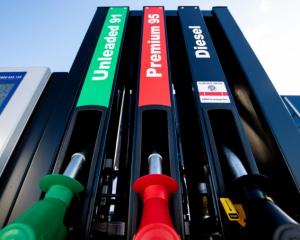
Many investment strategists had been puzzled by the dynamic but the answer was relatively straightforward. All risk assets were now trading almost entirely on the expectation of further central bank stimulus.
With the European Central Bank and the Bank of Japan exploring ever more radical monetary policies, all eyes had turned to the United States Federal Reserve, he said.
Over the course of the year, market participants had embraced the once ``out of consensus view'' the Fed would not be able to normalise monetary policy.
As a result, the steam had been taken out of the US dollar rally. When the market believed the Fed was likely to raise interest rates, the US dollar generally strengthened. A stronger US dollar served to tighten financial conditions, much in the way an interest rate increase would, but in advance of any actual fed tightening. Any attempt to normalise policy proved to be self-defeating, Mr Timms said.
``This has in turn has supported equities - cheap money for longer; gold - no policy normalisation; and long-dated treasury bonds - inflation will stay long.
``Simplistically, no Fed tightening and explosive liquidity provided by global central banks has been supporting virtually every global asset class. This is unprecedented.''
Mr Timms predicted energy, gold and materials shares should sell off, given the US dollar generally rallied in the expectation of higher interest rates.
Yesterday, oil prices fell nearly 4%, cutting most of the previous session's rise as traders noted that a tropical storm was behind this week's unexpected slump in US crude inventories.
Traders cited hopes for a global deal on stabilising crude output after Saudi Arabia, the leading oil producer inside Opec, and Russia, the biggest producer outside the group, agreed yesterday to co-operate in oversupplied markets.
Oil prices shot up late last week after US Government data showed the biggest weekly drop in stockpiles since January 1999, as Gulf Coast imports slumped to their lowest on record.
Traders said imports fell as ships delayed off-loading cargoes, because of tropical storm Hermine.
Most industrial metals slipped in thin trade yesterday, weighed by a stronger US dollar, weak oil prices and concern about Europe's economy, after German exports tumbled. Zinc was at its lowest in more than a week.
The US dollar index climbed on remarks by Fed officials, making commodities priced in the greenback more expensive for buyers outside the US.
German exports fell unexpectedly in July, recording their steepest drop in nearly a year, while earlier last week, industrial orders were weaker than expected.
Gold prices fell again, as hawkish comments on US interest rates from a top Fed official helped lift the US dollar, and as buyers continued to cash in on the price rally.
Mr Timms said economic data from the US had been mixed this year but there remained no convincing signs a recession had started.
The manufacturing sectors in the US had been operating in recessionary conditions, largely due to global oversupply issues and a global lack of pricing power.
The US services economy had been remarkably resilient, although the most recent monthly services index deteriorated markedly, he said.
The US economy was still growing, although the rate of growth appeared to have been slowing since early last year.
``In spite of this mixed economic picture, all indications from Fed officials point to a strong desire to hike interest rates at least once this year.
``Recall earlier this year the Fed telegraphed it planned four hikes in 2016.
``It would be embarrassing for the Fed to once again back down from its communicated plans.''












